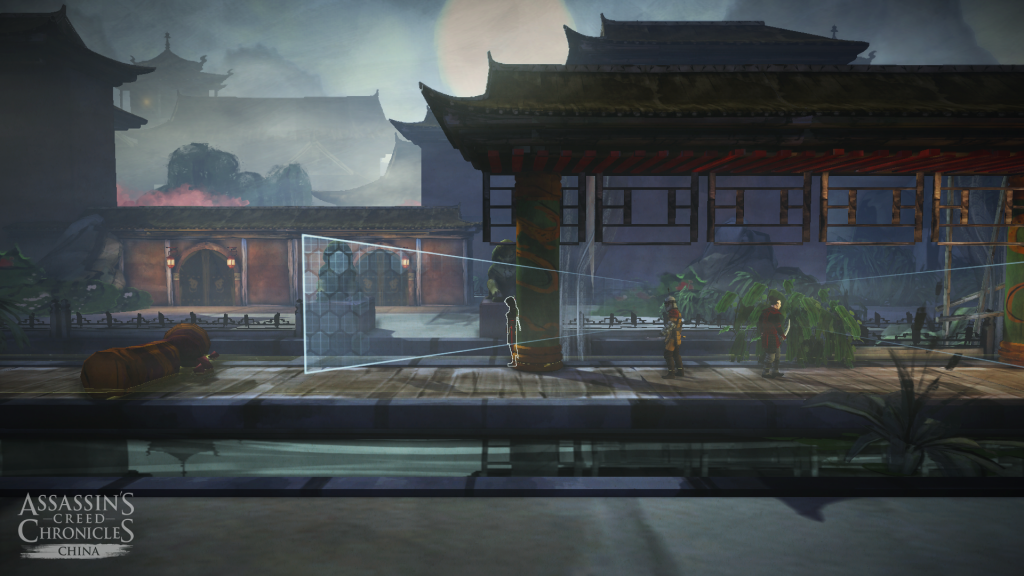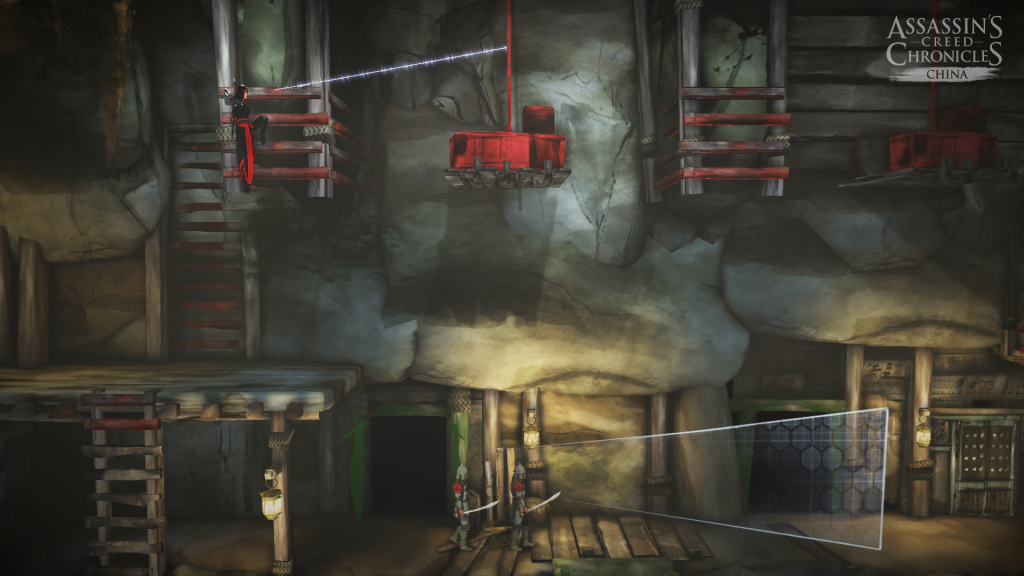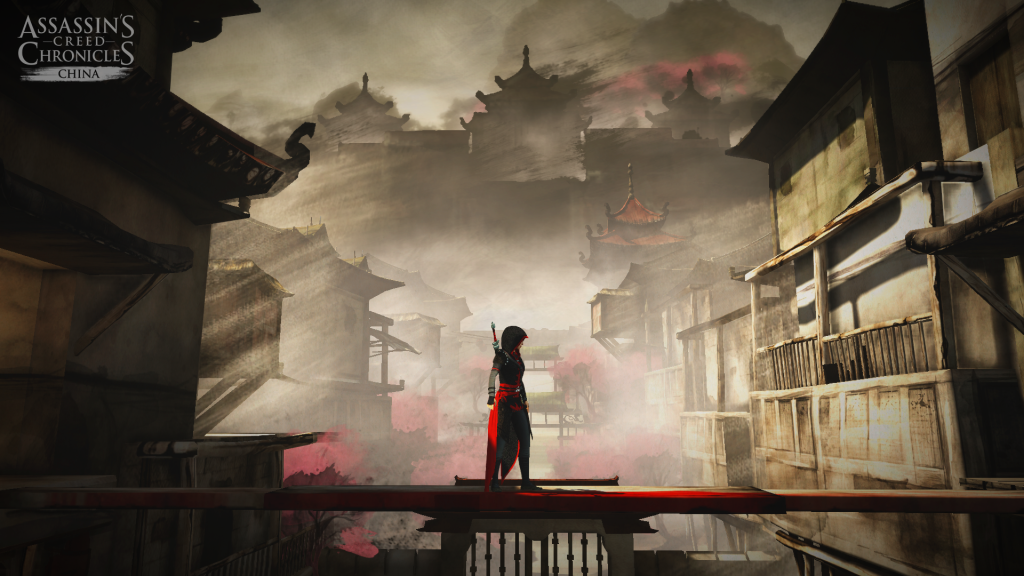Developer: Ubisoft
Publisher: Ubisoft
Platform: Xbox One, PS4, PC
Tested on: Xbox One
Assassin’s Creed Chronicles: China – Review
Even though the last two titles in the Assassin’s Creed series did not receive top scores, the franchise is still one of the most popular ones even during our next generation. Whilst most of the previous installments were known for their massive ‘open’ worlds, their newest spin-off series seems to be doing things a tad differently. Dive deep into the newest ‘2D’ adventure, Assassin’s Creed Chronicles: China, the first part of the chronicles trilogy. We were quite surprised about this first installment of this new take on the franchise.
Story
Shao Jun, the last remaining assassin of the Chinese branch of the brotherhood, returns to China in order to exact her revenge upon the Templars who mercilessly slaughtered her brethren. Under the guise of the crumbling Ming Dynasty, it’s easier to benefit from the ongoing chaos in order for her to return and complete her objective.
She starts out by letting the enemy think that they have captured her, to immediately start off in the right spot to begin killing her foes. Whilst there are a few smaller details added to the story, this is pretty much the entire plot the game will follow. In a way it’s sufficient, but for some reason we feel that Shao Jun would have been a great character to have some extra depth added to her background story. Nonetheless, the gameplay itself will reign supreme in this title.
Graphics
Assassin’s Creed Chronicles: China does not really look like any of the other games in the Assassin’s Creed franchise, as you’ll be treated to a bit more bland colors and a new style that suits the 2D gameplay a lot better. Environments are decently detailed, but the game suffers from recycled textures, causing a low amount of variety in each of the separate levels. Other than that, the characters look amusing, detailed and everything moves quite fluently.
Sound
The music in AC Chronicles: China is quite subtle, as you will have to rely a lot on the sounds you make yourself and thus an overwhelming soundtrack would be out of place. On the other side, the voice acting in the game is of great quality, especially the voice of Shao Jun, the main character is quite outstanding.
Gameplay
Unlike the other Assassin’s Creed games, this one is a 2D stealth/action platformer. Instead of roaming around freely, you’ll have a fixed route to follow (for the most part) in which stealth is more than once the key ingredient of reaching your goal.
The overall scheme of Assassin’s Creed Chronicles: China is pretty straightforward, as you will have to complete a specific goal each level, to progress to the next one. Each stage is filled with pesky guards, annoying obstacles and certain small puzzles you’ll need to overcome. Each of these hardships you’ll need to conquer in a different fashion, because rushing in like a madman will not always work charmingly.
You’ll notice that the game itself is fairly slow, as you will often find yourself hiding in the shadows until a guard faces the other direction or until you can catch him by surprise, kill him and drag him into your hiding spot. This means the game offers a lot of opportunities for you to hide in the foreground or background, in order to bypass your enemies or stealthily kill them. It’s safe to say that killing is not always the best solution, but when you have to, it’s best to use the right tools for the job. Whilst it may be tempting to use your sword and cut your foes in tiny little bits, you’ll often find yourself having to use your wits. You can use throwing knives in order to cut ropes and drop down heavy items on the guards. Or perhaps whistle a tune when hanging on a ledge and when you are approached by those who heard you, you can drag them down and toss a templar in the abyss below. The key is to think about your moves and complete the goal at hand.
When you are detected, a short alarm phase will start. If you’re able to evade your enemies and get out of sight until the timer reaches zero, you will be able to continue your mission. If you can’t escape, combat will be inevitable. Whilst this does not mean you’ll fail, combat is reasonably hard. You’ll have to make sure you parry incoming attacks, as you can only take one or two hits at the beginning of the game and your opponents can take many more. It’s best to practice your parrying and dodging skills if you wish to make it out of combat alive. Hiding in the shadows does not always mean you’re able to escape either, especially when enemies see you walk into hiding spots, as they will simply drag you out.
Even though the basic mechanics of the game might sound simple, the game itself is quite difficult. Slight errors will cause you to be detected and when you are surrounded by several guards, you will go down quite quickly if you haven’t mastered the basics of combat yet. If you still feel like you’re up for a bigger challenge, you can adjust the difficulty level (after you’ve completed the game) and earn even more upgrades and rewards for your character.
The difficulty might not always be that consistent due to the behavior of the AI. At times you’ll just be able to run in, stab an enemy, run off and wait for the alert period to stop, do it again and repeat the process over and over again. This takes away a bit of the excitement, but luckily this does not happen that often. (Because in many situations you will not be able to run away easily.)
Conclusion
Assassin’s Creed Chronicles: China is a great spin-off in the AC universe. Except for some minor AI issues and a flimsy story, the stealthy portions of the game are superb. The game will truly force you to become a real assassin, instead of a brawler that dresses up cool. Certainly worth checking out if you’re a fan of old school mechanics in a new jacket. Shao Jun is one of those characters we’d love to see in another game, properly fleshed out.
Assassin's Creed Chronicles: China - Review,1 Comment
Leave a Reply
You must be logged in to post a comment.







[…] but the long wait for the next part is finally over. While the first part played itself out in China, we now head all the way to India. Even though Bollywood movies were not yet a thing, it was clear […]